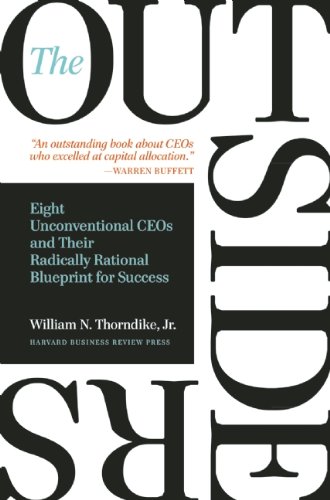

This article is an excerpt from the Shortform summary of "The Outsiders" by William N. Thorndike, Jr. Shortform has the world's best summaries of books you should be reading.
Like this article? Sign up for a free trial here .
What changes did Nicholas Chabraja make as CEO of General Dynamics, and did they work for the company?
In his biggest and most controversial decision, Nicholas Chabraja purchased Gulfstream and set General Dynamics down a new path. Find out how Chabraja kept core values of the company while creating new ways forward.
General Dynamics: Business Strategies
General Dynamics is an aerospace and defense corporation. After the end of the Cold War, it and many other defense companies faced a large contraction of spending as US national defense priorities shifted. Incoming CEO Bill Anders successfully led a turnaround that made General Dynamics the industry’s profit leader, instilling fundamentals that continue to this day. Later, Jim Mellor was named CEO, and then Mellor appointed Nicholas Chabraja as CEO in 1997.
In turn, his strategy for General Dynamics had three key ideas:
- The company would only stay in businesses where it could be #1 and #2 (a famous Jack Welch idea).
- The company would leave commodity businesses with low returns.
- The company would stick to its strengths. Namely, it would leave commercial businesses and stick to defense and government contracts.
Nicholas Chabraja as CEO
Nick Chabraja set a lofty goal for himself as CEO—grow the stock price by 4-fold in ten years (a 15% annual return). He figured the majority of this could come through market growth and improved operations. The rest had to come through acquisitions.
While this departed from Anders and Mellor’s actions, the fundamental beliefs were the same—General Dynamics should grow only in core businesses it knew well. Nicholas Chabraja began with small acquisitions, adding onto its information technology, tank production, and marine divisions.
In 1999, he made his hallmark move, the $5 billion purchase of Gulfstream, the largest commercial jet manufacturer. The acquisition was equal to 56% of the enterprise value of General Dynamics.
Observers criticized the move as departing from Anders’s 3-point strategy from 1991, but Nicholas Chabraja had a deeper logic—Gulfstream had stagnated in product development. In contrast, General Dynamics had considerable experience in aircraft from its previous days, and this expertise could be used to grow Gulfstream. In turn, Gulfstream would help diversify General Dynamics away from the fluctuations in military defense spending.
In an unusual move for outsider CEOs, Nick Chabraja sold stock to fund the purchase of Gulfstream. However, his logic was that General Dynamics was trading at all-time highs (23 times projected earnings, vs. the recent average of 16). He could sell ⅓ of the company to buy a business that would contribute half of its cash flow—a clear profitable arbitrage.
When Nicholas Chabraja retired from CEO in 2008, he had more than achieved his goal of quadrupling their stock price. Importantly, the three CEOs left a legacy of fundamental ideals—General Dynamics leads in all its business lines, and it has the industry’s highest return on assets and margins.
Even though Nicholas Chabraja deviated from the strategies of past CEOs, he incorporated those strategies into forward-thinking business decisions. Nicholas Chabraja continued to help General Dynamics grow until he too passed the reigns in 2008.

———End of Preview———
Like what you just read? Read the rest of the world's best summary of William N. Thorndike, Jr's "The Outsiders" at Shortform .
Here's what you'll find in our full The Outsiders summary :
- What great CEOs like Warren Buffett do that average CEOs don't
- How to master the art of capital allocation
- How to be a great manager that your team is excited to work with






